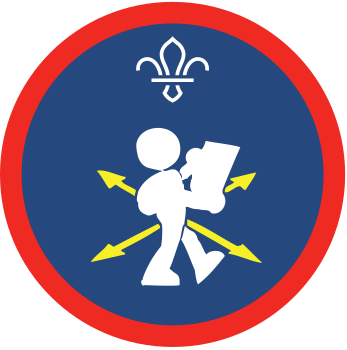Magnificent map masters
You’ll need
- Coloured pens or pencils
Before you begin
- Print copies of the ‘Mark the map’ and ‘Orienteering spot the difference’ sheets. You’ll need enough for one of each between two.
- Print or download a copy of the ‘Answer sheet (Orienteering spot the difference)’ too. If you’re looking to save paper, consider running the activities as bases in this session, with groups moving between them.
Spot the difference
- Split into pairs and give each pair an ‘Orienteering spot the difference’ sheet. Explain that there are 10 differences to find. Pairs should work together to find each one.
- Once everyone’s found the 10 differences, have the pairs take turns to show where a difference is, until all 10 have been covered. Encourage everyone to use the names of the map symbols to help pinpoint where each difference is.
- Check everyone’s answers against those circled on the ‘Answer sheet’.
Mark the map
- Keep or switch pairs. Give each pair a copy of the coloured ‘Mark the map’ sheet and writing materials. Explain that orienteering maps are coloured to help show orienteers where they are and where they should go, based on the terrain and other obstacles. This helps orienteers prepare for new environments.
- Explain that pairs should draw the features onto the map on the ‘Mark the map’ sheet. They should use the following instructions to do this. Certain symbols will go in different places depending on the colour of the map section. Each symbol can be copied from the key on the map.
- Read out these instructions for where to place the symbols slowly, making sure everyone hears and understands. You could check the first symbol and use this as a practice round:
-
- Draw a large pit in open land
- Draw a bridge over a lake
- Draw a railway through the impassable fields at the top of the map
- Draw a man-made object in undergrowth
- Draw a pylon in a section of forest suitable for running
- Draw a building in a forest suitable for slow running or walking
- Draw a high fence on a paved surface by a building
- Check that everyone heard each instruction and has placed a symbol on the map for each one. When everyone’s done, swap maps with another pair to check the answers. The person leading the activity should read out each instruction again and discuss any that people have trouble with.
Reflection
This activity may have been your first look at map reading, and the first step on the road to mastering orienteering. Take a moment to think about all the different situations where people use maps, including sat navs and smartphone maps. When do you need maps in your daily life? Maps are most useful when we’re in unfamiliar places or when we need to get from one place to another as quickly as possible. How do you think orienteers use maps? Orienteering involves running between control points, following a course you’ve not seen before, in a place you might be unfamiliar with. This means that participants have to read maps quickly to know where they’re going and the easiest way to get there.
This activity helped you develop existing skills like map reading and navigation. Take a moment to think about the sort of places where a person might use these. Can you think of any areas that might be good for practising orienteering? Local parks might be good to start out orienteering outdoors, as they’re usually clearly defined and easier to navigate than forests, yet still offer all the challenges of map reading.
Safety
All activities must be safely managed. You must complete a thorough risk assessment and take appropriate steps to reduce risk. Use the safety checklist to help you plan and risk assess your activity. Always get approval for the activity, and have suitable supervision and an InTouch process.
Once everyone has completed the ‘Mark the map’ activity, they could go back and colour in the black and white ‘Orienteering spot the difference’ map, with a key to explain what each colour means. Discuss which colours people have chosen for certain areas and why some may be easier to recognise than others.
Anyone who might struggle to read the maps used in this activity could benefit from blown-up copies with larger features. All attachments can be printed on larger paper with the same scale.
All Scout activities should be inclusive and accessible.
With two copies of the ‘Mark the map’ sheet, everyone could also create their own ‘spot the difference maps’ by drawing the same features on both maps and then adding a few extra features that are unique to each map. Groups could create a pair of maps for other people to solve.
Also, consider bringing out a 1:25000 map of the same area and have a discussion with everyone about the differences in the maps. Think about how they map out the landscape differently and why the orienteering map is better suited to its purpose.
It might be useful to talk about orienteering before doing this activity, so that the group knows where it’s leading. Camp is a common place for young people to try orienteering for the first time, although once they have the skills it may lead to many destinations. Ask their opinion about good locations in the local area to explore and get them interested.
